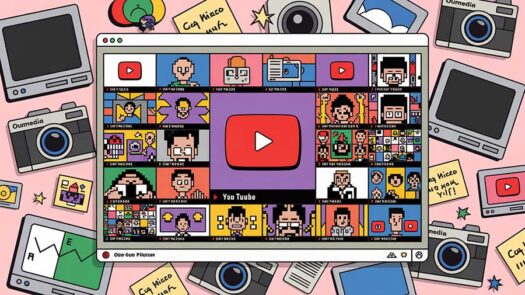Nonprofit launches journalism operation to cover women’s issues
This column appeared Sept. 4, 2001, in the Online Journalism Review. Here’s the version on the OJR site.
Rita Henley Jensen, editor-in-chief of Women’s Enews, makes no apologies for her news service’s tilt on the news. “We do have an agenda,” she says. “It’s a pro-woman agenda.”
Still not widely known, Women’s Enews is one of those fascinating experiments made possible only because of the Web. Launched in June 2000 by the NOW Legal Defense and Education Fund, the news service (at www.womensenews.com) is run by a small staff of professional journalists.
Kathryn Rodgers, president of the news service’s parent organization, recounts its genesis this way: “Looking out at the media’s coverage of women, we saw a tremendous void in women’s voices, in women as opinion shapers, and in the coverage of all the things that women do in society. So we decided to show the media what they were missing. Not to go on a blame campaign, but to do the ground work, actually do the reporting, and go back to these media outlets and say, ‘Here’s what we’re talking about when we say you’re not covering women’s issues.’ ”
A lot of media organizations say we’ve got a women’s page or we cover the WNBA. The point is to have it on every page.
And that, basically, is how the NOW Legal Defense and Education Fund got into the journalism business. (Founded more than 30 years ago by the same women who founded the National Organization for Women, the organization has separate funding and a distinct mission from NOW.) Rodgers and her staff began by recruiting Jensen, a former senior writer for the National Law Journal who won an Alicia Patterson Fellowship grant in 1994 and wrote an expose about the role lawyers played in the savings-and-loan scandal of the late 1980s.
Jensen, speaking by phone from New York, recalls, “I had some hesitation because I didn’t know how this nonprofit operation and journalism were going to mix. But I’ve had a longtime interest in women’s issues and this seemed to be right up my alley, so I signed on and haven’t looked back.”
Jensen went about building a small news service from the ground up, hiring a small team of editors and support staff and assembling a national network of free-lance writers. Free-lancers, a few of whom are men, typically receive $350 for a 750-word article.
Women’s Enews reports and publishes a half-dozen original stories a week as well as one or two commentaries. All the articles appear on its Web site, but the news service’s main goal is for media outlets to run the stories, as they do with wire services like the Associated Press and Reuters.
One difference: the content from Women’s Enews is free. Indeed, anyone can obtain permission to republish the material in any medium simply by dropping them a note.
The news service’s stories run from cultural offerings, such as last week’s look at contemporary Latina playwrights, to a five-part special report assessing issues related to women and education.

Rita Henley Jensen
Editor-in-Chief
A new feature, Journalist of the Month, looks at women journalists who are making an impact on the news business, such as this profile of Narda Zacchino, who recently moved on from the Los Angeles Times to the top ranks of the San Francisco Chronicle.
But the most eye-catching feature may be Outrage of the Week, a snapshot of piggish behavior, lunatic policies and outlandish double standards.
Recent outrages have run the gamut from an executive coaching program to tone down “Bully Broads” to a report that the American Heart Association had caved to anti-abortion forces and abandoned its decision to underwrite embryonic stem cell research that could help fight heart disease.
The news service’s staff sends a weekly e-mail to some 200 newspapers, targeting national editors with a budget describing syndicated stories. In addition, a separate e-mail is sent to op-ed editors offering new commentaries.
A receptive reaction
The early response has been promising, Jensen says. On the news side, “Several news organizations have picked up our stories and run them. Others lift the core of the story and write their own version. That’s what the New York Times, Washington Post and Los Angeles Times have done several times.”
One story that eventually bubbled up to the major media was the March 25 story in Women’s Enews detailing how HIV/AIDS had increased by 40 percent in the past five years among women age 50 and over. The story related how post-menopausal women often neglect safe-sex precautions because they believe they’re not at risk. On July 17, the Washington Post ran a similar but gender-neutral story about the skyrocketing increase in AIDS among seniors.
On the opinion front, Jensen cites an estimate by Washington Post columnist Geneva Overholser that 85 percent of the pieces appearing on newspapers’ op-ed pages are written by men, and a fair number of the remaining articles are anti-feminist. “We think it’s important to increase the number of viewpoints on those pages,” she says.
They’re off to a good start. For example, the Chicago Tribune republished a commentary on the significance of the black women’s vote in the 2000 elections. And MSNBC and the New York Daily News were among the outlets that republished a commentary on the media’s lampooning of Florida Secretary of State Katherine Harris’s looks.
On the whole, Women’s Enews has exceeded internal expectations, Rodgers says. “The original business plan forecast it would take two to three years to break into the media as a credible news organization. But we’ve already got a couple of thousand journalists who have subscribed to our newsletter and are looking at our site. We know they’re passing stories around and have picked up on some of the ideas.”
Breaking through the perception barrier
Rodgers and Jensen both say the major media still don’t see how they’re falling short. “A lot of media organizations would be surprised by the suggestion that they’re not covering women’s issues,” Rodgers says. “They say we’ve got a women’s page or we cover the WNBA. The point is to have it on every page. We keep reminding people that women are not a special-interest group, we’re half the population.”
Says Jensen: “No major newspaper has women’s issues as a beat. The Living and Style sections have replaced women’s sections, but they’re about makeup, or how to find a babysitter. Women’s magazines are filled with service pieces, but we’re not writing service journalism, we’re writing about women’s news — stories that are not being carried by the mainstream media.”
“I think (newspaper editors) want to cover these issues, but they don’t know how to do it.”
Rita Henley Jensen
Are newspaper editors out of touch with women readers, then? “I think they want to cover these issues, but they don’t know how to do it,” Jensen says. “I don’t know if our news would increase women’s readership for newspapers, but I suspect it might.”
Credibility is a word that Jensen returns to again and again. “Our pro-women bias affects what stories we choose to report, but once we select the story, we instruct our reporters to cover the story in a professional way as they would for any publication — so the resulting story is a credible, balanced report on the topic.”
Jensen underscores her operation’s editorial independence from the NOW Legal Defense and Education Fund. “No, there’s been no interference at all from my publisher or boss,” she says. “I run my own show, and they understand the principles of journalism and know that we don’t want to lose our credibility.”
Rodgers says building credibility and trust with hundreds of far-flung media outlets will take time. “The first wave was for us to go after women journalists, and now we are starting to target editors and TV news producers. The news folks are a bit skeptical, asking, ‘Are you a credible news organization? Aren’t you biased?’ And we’re saying, No, we’re just asking different questions than you’re asking.”
Take the bankruptcy reform bill passed by Congress. “You don’t think of bankruptcy as a women’s issue,” Rodgers says, “but under this bill credit card companies were given equal standing with custodial parents who are owed child support.” Women’s Enews’ story on the subject highlighted that angle.
Going straight to the source
Both women suggest that Women’s Enews would be impossible without the Web and the Internet. “With the Web, you don’t need to buy your own printing presses, and you can reach a sizable audience even without a huge number of publications picking up your news service,” Rodgers notes. Its offerings have been republished in church bulletins, newsletters of women’s organizations, a Swedish news outlet, and on an Indonesian listserv.
One section of the site that journalists shouldn’t overlook is W-E Sources, a growing database of women experts in fields ranging from domestic violence to Social Security. Jensen cites a study by the Readership Institute of the Media Management Center at Northwestern University, which found that the vast majority of news stories do not quote women, even in the so-called soft sections. She attributes that to lack of initiative by reporters who fall back on the usual suspects instead of cultivating new sources of expertise.
Between the story pick-ups, the Web site readership and journalists turning to the news service’s list of women experts, Rodgers says, “we’re getting the conversation we wanted about our issues.”
Jensen thinks we’ll see more nontraditional journalism ventures like this one crop up in other settings. “I think it’s inevitable. The reason I was a prize-winning journalist was because I had a hunger, an underlying belief in the importance of gathering the facts and getting the news out there. I see that same drive and hunger and commitment when I run into online journalists at news conferences. But the trend in the industry, especially in broadcasting, is on the continual pressure to create profits and whittle down the news operation. So there’s got to be another outlet, another forum for this kind of committed journalism, and when you can’t do your job in a traditional newsroom setting, you start looking elsewhere, like the nonprofit sector.”
What’s ahead? Rodgers’ vision is to expand the staff and obtain funding from foundations or other revenue streams to finance the operation. The site now runs no advertising. “The most realistic goal is for it to become a reputable news service used in the major news outlets throughout the country, and as a resource for commentary and for our database of women experts,” she says.
Adds Jensen: “We hope we can go out of business one day. But I don’t see it happening any time soon.”
Note: Jensen will be appear on the panel “New Forms of Journalism” at the second annual conference of the Online News Association in Berkeley, Calif., on Oct. 27, 2001. I’ll be the moderator.
Postscript: Women’s Enews became an independent operation in early 2002.




